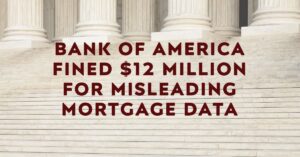The safety of banks from collapse has always been a concern for customers, investors, and regulators. Given recent bank failures, such as SVB and Signature Bank, many people are wondering about the safety of their money in banks, especially Bank of America. In this article, we will analyze the current financial health of Bank of America and evaluate its safety from collapse, with a focus on the keywords “Is Bank of America safe from collapse” and “Is Bank of America in trouble.”
Bank of America's Financial Health
Bank of America is one of the largest banks in the United States, with over $2.8 trillion in assets. It operates in all 50 states and serves more than 66 million customers. Its financial health is crucial to the stability of the US banking system.
In recent years, Bank of America's financial performance has been relatively stable. In 2022, the bank reported a net income of $20.4 billion, a decrease from the previous year's $27.4 billion. However, its revenue increased from $91.2 billion in 2021 to $95.2 billion in 2022. The bank's return on equity (ROE) was 11.1% in 2022, which is considered healthy for a large bank.
Bank of America's balance sheet shows that it has $1.4 trillion in deposits and $998 billion in loans. The bank's loan portfolio is diversified, with consumer loans accounting for 38% of total loans, commercial loans accounting for 40%, and residential mortgages accounting for 22%. The bank has maintained a healthy level of capital, with a Tier 1 capital ratio of 11.6%, which is well above the regulatory requirement of 6%.
Bank of America's Risk Profile
Bank of America, like any other bank, is exposed to various risks that could affect its financial health. The primary risks faced by Bank of America are credit risk, market risk, and operational risk.
Credit risk is the risk that the bank's borrowers may not be able to repay their loans. Bank of America has a diverse loan portfolio, which helps mitigate the risk of default. The bank has a rigorous credit risk management process that assesses the creditworthiness of borrowers before approving loans.
Market risk is the risk of losses due to changes in market conditions, such as interest rates, foreign exchange rates, and commodity prices. Bank of America has a large portfolio of trading assets and liabilities, which exposes the bank to market risk. However, the bank has a robust risk management framework that monitors and manages market risk exposures.
Operational risk is the risk of losses due to inadequate or failed internal processes, human errors, or external events. Bank of America has implemented several measures to mitigate operational risk, including robust internal controls, information security measures, and disaster recovery plans.
Bank of America's Regulatory Compliance
Bank of America is subject to various regulatory requirements, including capital requirements, liquidity requirements, and stress testing. The bank is also subject to the supervision of the Federal Reserve and other regulatory bodies.
In recent years, Bank of America has faced several regulatory fines and lawsuits related to its business practices. However, the bank has implemented several measures to improve its compliance program and strengthen its risk management framework.
Is Bank of America Safe From Collapse?
Bank of America is one of the largest financial institutions in the world, with trillions of dollars in assets and a wide range of services offered to its customers. However, recent news of the collapse of Silicon Valley Bank (SVB) has sparked concerns about the stability of the banking industry, with many wondering whether Bank of America is safe from collapse.
In the wake of the collapse of Silicon Valley Bank, Bank of America has seen a surge in deposits as customers seek a safe haven for their funds. According to reports, Bank of America has taken in more than $15 billion in deposits, with startups and venture capitalists among those scrambling to get their money into the safe hands of a reputable financial institution.
This influx of deposits is a clear indication that customers and investors have confidence in Bank of America's ability to weather financial storms and maintain stability in the face of economic volatility. It suggests that Bank of America is perceived as a safe and reliable financial institution, capable of protecting its customers' funds even in times of crisis.
For customers and investors, this trend towards depositing money with Bank of America is a sensible move. The bank has undergone significant restructuring since the 2008 financial crisis and has taken steps to improve its financial position, including shedding non-core assets and strengthening its balance sheet. Moreover, Bank of America has been subject to ongoing regulatory oversight and stress testing, which are designed to ensure the safety and soundness of financial institutions.
The surge in deposits following the collapse of Silicon Valley Bank is a positive sign for Bank of America, indicating that customers and investors trust the bank to manage their funds and protect their interests. It is a testament to the bank's reputation for stability and reliability and suggests that Bank of America is a safe and secure option for those seeking a trusted financial partner.
Furthermore, Bank of America has a strong presence in the United States and a diverse customer base, which helps to spread risk across different sectors and regions. The bank also has a strong capital position, which provides a cushion against unexpected losses.
Overall, Bank of America appears to be in a relatively healthy financial position and is not currently in imminent danger of collapse. However, as with any financial institution, there are always risks involved, and customers and investors should always monitor the bank's financial health and risk profile.
Conclusion: Is Bank of America in Trouble
Based on the analysis of Bank of America's financial health, risk profile, and regulatory compliance, we can conclude that the bank is relatively safe from any trouble or collapse. The bank's financial performance has been stable, and its balance sheet shows a healthy level of capital and a diversified loan portfolio. The bank has implemented several measures to mitigate various risks, and its regulatory compliance program is robust.
While there are always risks involved in the banking industry, Bank of America does not appear to be in imminent danger of collapse. However, customers and investors should always monitor the bank's financial health and risk profile and stay informed of any changes or developments that may affect the bank's stability. It is important to note that no bank is entirely immune to financial shocks, and customers should always be aware of the risks associated with their investments.
References:
- https://www.cnbc.com/2022/12/27/how-bofa-came-back-from-the-brink-of-collapse.html
- https://fortune.com/2023/03/15/winner-silicon-valley-bank-collapse-bank-of-america-jpmorgan-goldman-sachs-deposits/
- https://seekingalpha.com/article/4590414-bank-of-america-a-safe-haven-amidst-banking-turbulence
- https://www.rebellionresearch.com/is-bank-of-america-safe-from-collapse



